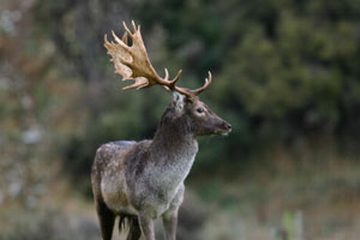
Exotic deer were first imported into North America during the 1900’s and are now found throughout most of the white-tailed deer’s range in the United States. The number of exotics increased rapidly in the 1950’s. In Texas alone, the last exotic survey was performed in 1996 — and at that time there were an estimated 190,000 animals and 76 different species. Current estimates put the statewide number of exotic ungulates at 250,000!
Research has examined food habits of axis, sika, fallow, blackbuck antelope, and aoudad sheep — and data conclusively found that most exotics directly compete with white-tailed deer. Exotic deer, like whitetail, either preferred forbs or preferred browse, but could perform well on grass, as well. Regular readers of Buck Manager know that white-tailed deer prefer forbs when they are available, but as forbs become unavailable, they shift their diet to browse.
However, white-tailed deer cannot live on grass. The fact of the matter is they will die with a belly full of grass. Thus, exotics directly compete with white-tailed deer for highly-sought forbs, then browse, the grass. Since our native deer can not survive on grass, exotics have the long-term competitive advantage, especially on degraded habitat.
If you have exotic deer in your area or are conisdering stocking exotic ungulates, keep in mind that these animals directly compete with one another. As forbs and browse are removed from an area, exotics have the ability to shift their diet to grass and white-tailed deer will suffer from malnutrition and, in addition, from psyhological factors that will impact overall herd dynamics.
